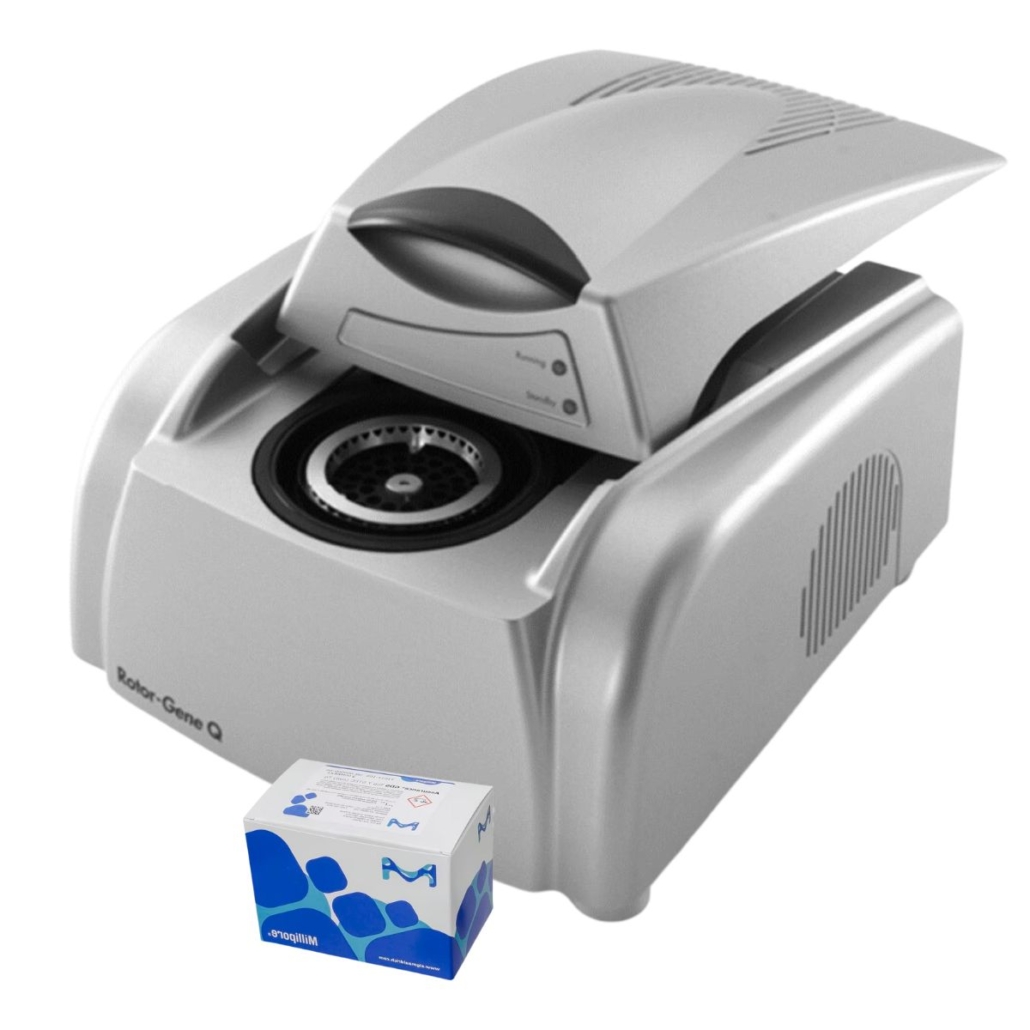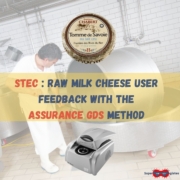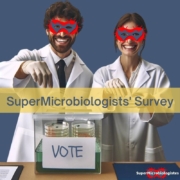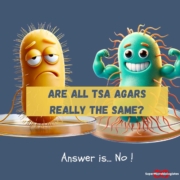STEC: Cheese Factory’s Experience with the Assurance GDS PCR Method
Before adopting a technology in your food microbiology laboratory, it’s essential to take the time to discuss with other users to understand the strengths and weaknesses of the technology.
Our mission at SuperMicrobiologistes is to create connections between food microbiology laboratories to facilitate this kind of field experience feedback.
For this article, we had the chance to speak with Coralie Siebman, the coordinator of the Fromagerie Chabert laboratory, who implemented Merck’s PCR Assurance GDS method for detecting Shiga toxin-producing E. coli (STEC) in her laboratory.
Here is her unfiltered feedback!
In blue: We wanted to give the supplier of the PCR Assurance GDS (Merck) the opportunity to share their remarks and/or comments.
The Microbiology QC at Fromagerie Chabert
Coralie, can you tell us which matrices are analyzed in your laboratory?
We internally analyze a wide range of matrices from raw milk, starting with the raw material (raw milk) to the finished product (cheese after 3 days of production / semi-matured or matured cheese). We analyze raw milk cheeses such as cooked pressed cheese (Emmental / Gruyère) and uncooked pressed cheese (Reblochon / Tomme de Savoie), as well as soft cheeses (Vacherin).
How many analyses do you perform per year?
In terms of analysis volume, the internal laboratory at Fromagerie Chabert performs more than 50,000 analyses per year for all types of germs. Historically, the number of Salmonella and Listeria analyses is higher, but the number of STEC analyses tends to increase year by year, reaching 10,000 STEC analyses in 2022.
“The Assurance GDS method caught our attention because it uses an effective immunological separation (IMS) upstream of the PCR.”
Detection of STEC by PCR
How long have you been using the Merck* Assurance GDS method?
We started testing the GDS method in June 2021 and fully implemented it in January 2022. So, we now have 2 years of experience with the GDS method.
Before using Assurance GDS STEC, which method did you use?
Between 2018 and 2021, we used a classic PCR method.
Why did you change technology?
The issue with the method initially implemented in 2018 was the high number of samples in suspicion and not confirmed (presumptive positive samples). These presumptive positives had a daily impact on batch release:
- Delay in batch release
- Loss of confidence from production in the lab results
- Cost of analyses (confirmation) by an external lab, including false positives
- Additional workload to continue analyses
And why did you choose this method (Assurance GDS)?
The Assurance GDS method caught our attention because it uses an effective immunological separation (IMS) upstream of the PCR, capable of reducing these presumptive positives and thus solving these issues.
Which kits do you use?
The kits used in the laboratory for STEC detection include:
- The first intention test for detecting virulence genes stx1 or stx2 + eae and the O157serogroup (MPX TOP 7 kit).
- The second intention test for detecting non-O157 serogroups (which includes the detection of serogroups O26 / O103 / O121 / O111 / O45 / O145) (MPX ID kit).
- The confirmation test following the detection of the O157serogroup (EHEC ID kit for E. coli O157).
Can you explain the test procedure?
It all starts with weighing 25 g of sample (milk or finished product) suspended in 225 ml of mEHEC culture medium. This suspension is incubated at 41.5°C for 18 to 24 hours.
After incubation, we proceed with immuno-separation (IMS): 1 ml of the culture broth is contacted (for 10 min under agitation) with a specific volume of magnetic particles designed to capture microorganisms belonging to the 7 specific O serogroups of the main STEC.
These particles (contacted with our sample) are then recovered following the principle of immuno-magnetic separation (IMS) and incubated in brain-heart infusion broth (BHI) for 2 to 4 hours (specific BHI incubation for raw milk). After this 2 to 4-hour incubation, the particles are recovered using their magnetic function and resuspended in 45 µl of resuspension solution.
The PCR can then be started by transferring 30 µl of this resuspension solution containing the magnetic particles into the tubes of the MPX TOP 7 kit for detecting stx and eae genes and the O157serogroup.
In case of a positive result (stx+/eae+), the serogroup detection kit (MPX ID) is launched from the initial culture broth following the same principle of immuno-magnetic separation. During this serogroup detection test, the BHI incubation step is not necessary even for raw milk products.
And for confirmation, what protocol do you use?
STEC confirmation is simplified with the GDS method as it is performed directly from the immuno-capture that provided the PCR result (PCR result obtained with the MPX ID kit).
The immuno-capture product is spread on chromogenic agar plates (Chromagar STEC + TBX for non-O157 and Chromagar STEC + CT-SMAC for O157).
The characteristic colonies (5 colonies) are then tested using the previously mentioned kits depending on the detected serogroup (MPX TOP 7 + MPX ID for non-O157 and MPX TOP 7 + EHEC ID for O157). If the colony contains stx/eae genes + the serogroup, then the sample is confirmed.
“The GDS method has significantly reduced the number of presumptive (and unconfirmed) positives…”
Advantages and Limitations of the Assurance GDS Technology

What are the main advantages of the Assurance GDS method for you?
The GDS method has significantly reduced the number of presumptive (and unconfirmed) positives and increased the lab’s responsiveness in delivering results necessary for batch release. Indeed, the Assurance GDS method has allowed us to internalize confirmation.
And what are the disadvantages of the Assurance GDS method?
Only 36 samples can be analyzed simultaneously on the same thermocycler for STEC analysis, which limits the number of analyses per day.
Response from Merck: For your information, the Assurance GDS method offers most pathogens with 72 positions instead of 36. The 72-position STEC kit is under development.
In the case of raw milk products, the BHI incubation delays results transmission by 2 hours, which can be problematic in some cases. However, this additional step ultimately increases result specificity for complex matrices like raw milk products, which is not negligible.
For other tests in the laboratory (Salmonella and Listeria), what methods do you use?
We transitioned Salmonella analyses to the GDS method simultaneously with STEC. For Listeria, we have retained the method in place for years, which allows us to detect both Listeria spp and Listeria monocytogenes with a single kit.
Thank you very much, Coralie.
If you have any other questions for Coralie, feel free to ask them in the comments!
If you want to speak with a Merck specialist about this method, click here.













Leave a Reply
Want to join the discussion?Feel free to contribute!